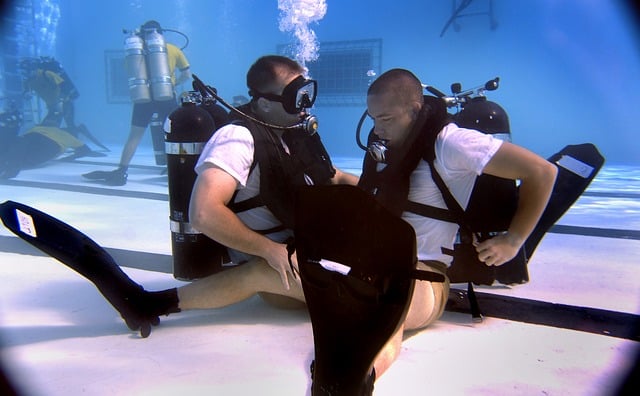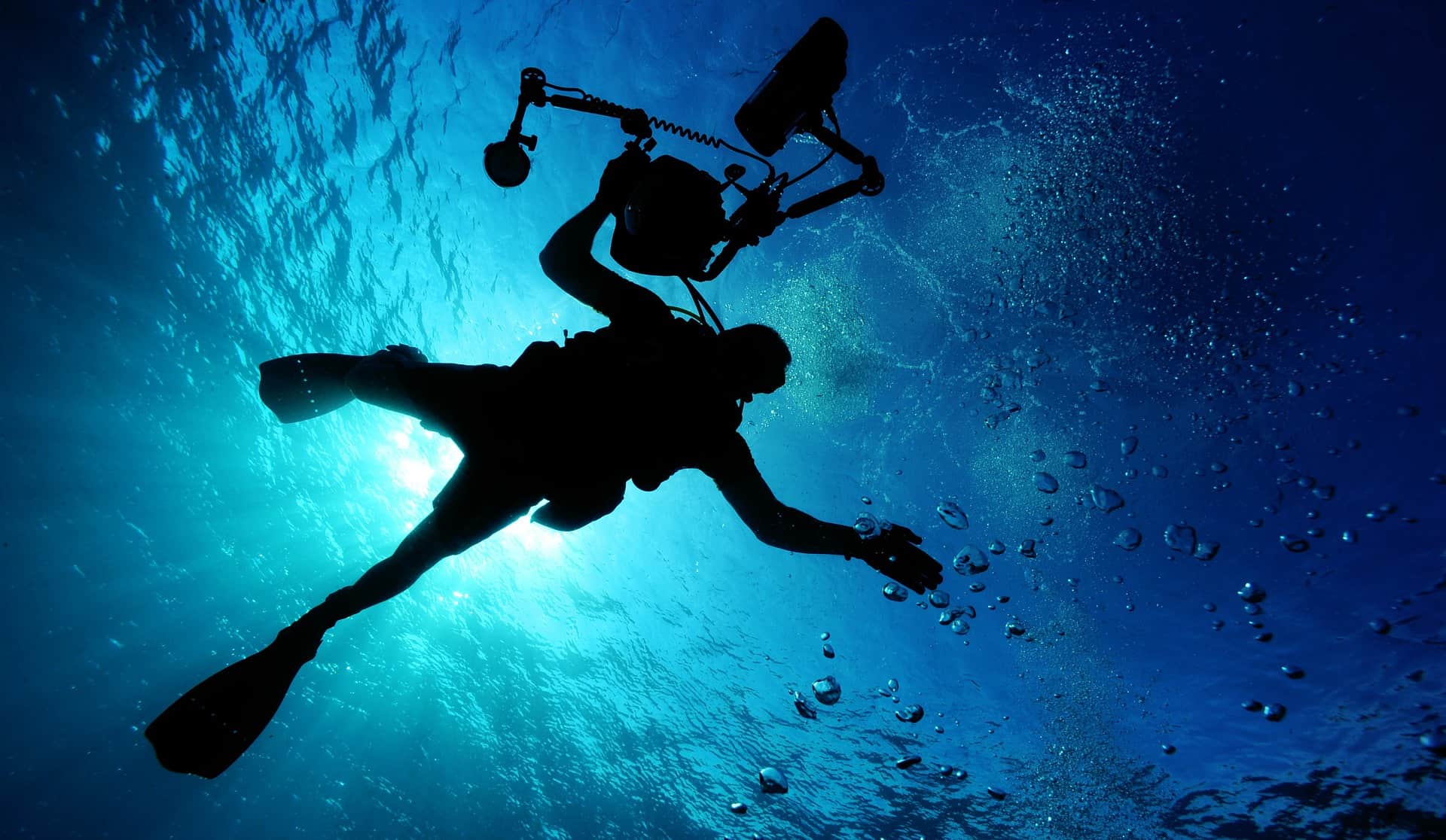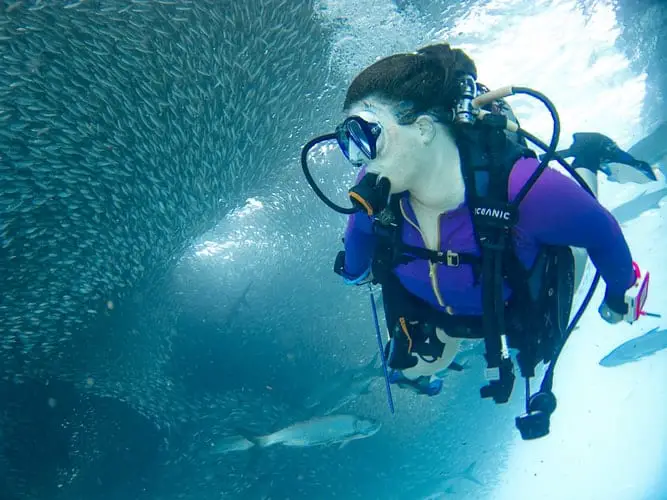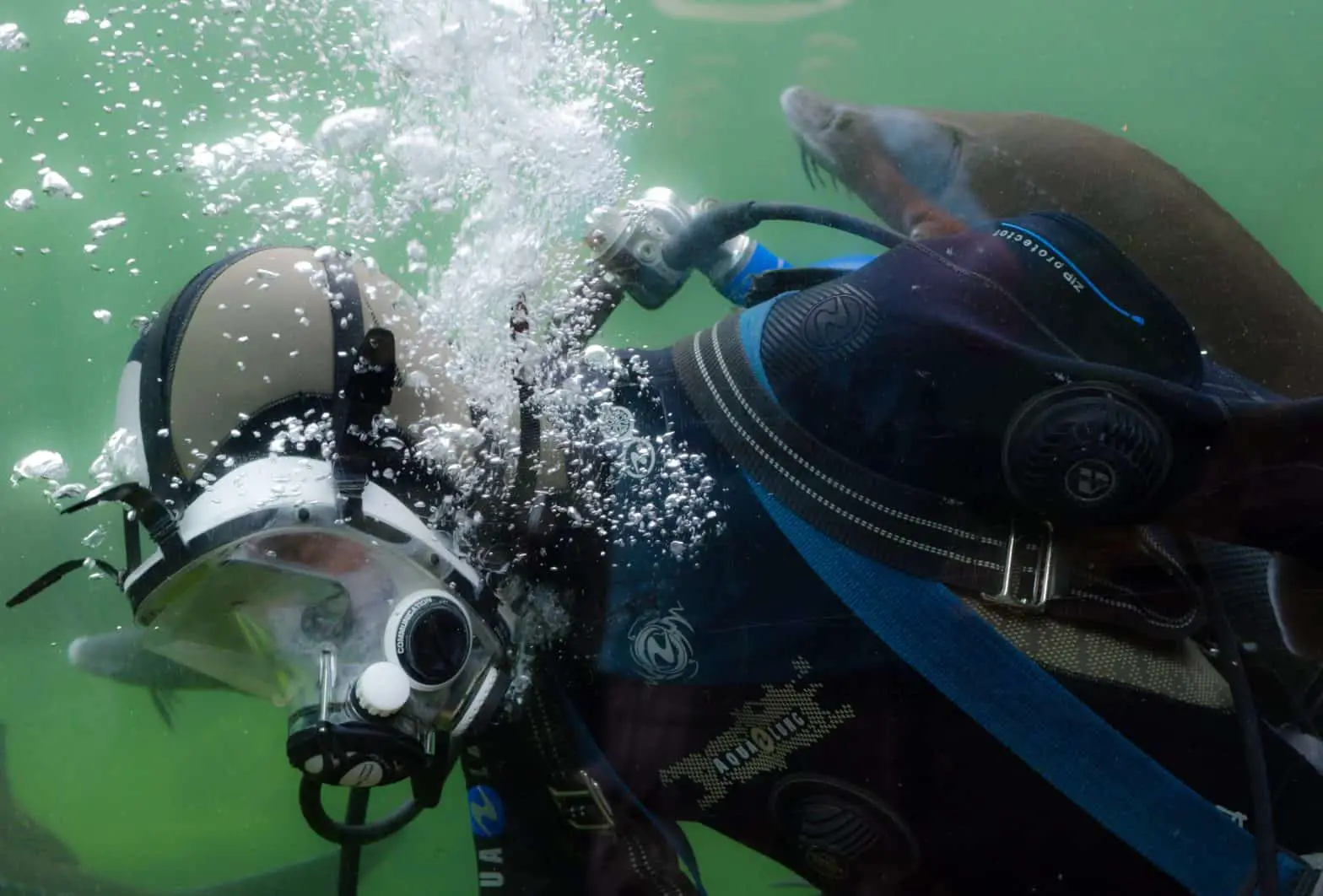Table of Contents
*This post may contain affiliate links. As an Amazon Associate we earn from qualifying purchases.
In this article, we will examine shallow water blackout, one of the least well-known but most dangerous conditions that can afflict underwater swimmers.We will examine the causes of shallow water blackout, take a look at basic behaviors that put swimmers and divers at risk, and talk about techniques that can help keep you safe at the pool, the beach, or in any situation where you may be free-diving—without scuba gear.
How Shallow Water Blackout Happens
Shallow water blackout occurs when a swimmer or diver enters a state called “hypoxia”, or oxygen deprivation, to the point where the brain loses consciousness. There are no symptoms either preceding or following the loss of consciousness. This means the person does not exhibit the usual behaviors associated with drowning. The body simply goes limp, and worse, if the victim’s gear weight is too heavy, they will quickly sink out of sight.
Because the brain is already starved of oxygen at the point blackout occurs and drowning begins, brain damage and death happen much more quickly with shallow water blackout than with other forms of drowning. Assuming aid is nearby and can be delivered quickly, only a few minutes separate the onset of blackout and the occurrence of death.
If the swimmer is alone or people do not quickly notice their distress, or if their limp body usually floating at the bottom of a pool or in shallow water, they will have no chance of being rescued in time to save them.
Causes Of The Condition
One of the reasons shallow water blackout occurs so frequently and so easily is because people fail to understand the way in which their bodies process oxygen and carbon dioxide. Most underwater swimmers in fact practice holding their breath as long as they possibly can. Many of them hyperventilate, hoping to build up oxygen saturation in their bodies prior to a dive. As we shall see, these techniques can be fatal.When a person takes a breath, the lungs achieve two important goals: taking in and transferring oxygen to the bloodstream (which among other things feeds the brain its oxygen), and, via the exhale portion of the breath, expelling carbon dioxide, which is a waste gas produced by the body’s biological processes.Interestingly, the urge to breathe is not primarily triggered by the body’s need for oxygen, but rather by the need to remove carbon dioxide. That means when the body’s monitoring system detects too much carbon dioxide built up in the blood, the lungs kick in to draw a breath obtaining oxygen and removing the carbon dioxide.
The more a person holds their breath, say in underwater swimming activities, or if a person tries to “build up” oxygen levels in their blood by hyperventilating, the more it sends carbon dioxide levels to dangerous levels.
Why Is A Low Carbon Dioxide Level Dangerous?
Remember, the body requires carbon dioxide’s presence in the blood to trigger the urge to breathe. Also, the longer a person holds their breath, the lower the oxygen levels will drop in their blood. This means, without any warning whatsoever, the oxygen levels in a person doing repeated long-interval breath-holding or practicing hyperventilation before diving or underwater swims, can drop to the point they completely and instantly lose consciousness.
Since the loss of consciousness causes no other symptoms than the person going limp, again their condition might not be readily seen and recognized by other swimmers. And that delay in seeing the problem can be fatal.
This is just one reason why swimmers should always pair up with a buddy whose job it is to keep an eye on their partner in case of trouble.
Importance Of Safe Diving Skills
Given the extreme peril that an underwater swimmer or diver can find themselves if they ignore the threat of shallow water blackout, it is important to examine steps swimmers can take to avoid that threat. The good news is that if a swimmer takes care, they can definitely swim safely.
The key safe diving skills you will want to learn and use:
- Do not swim alone!—buddy up, buddy equal, and look out for your partner
- Watch your gear weight—make sure you float even after exhaling
- Never ignore or try to prevent the urge to breathe (e.g. by hyperventilating)
- No long or repetitive underwater activity
- Avoid pushing yourself to your limits
Education Only Works If You Use It

image via: pixabay
One of the main problems with training in safety skills is that they mostly will feel anti-intuitive and actually too restrictive to the people who need to hear the safety message the most: the mainly young, fit, experienced swimmers and divers who think nothing of pushing themselves when it comes to holding their breaths.
While it is natural for young people to want to test their limits as athletic performers, it can also be exceedingly dangerous to do so if it involves holding the breath underwater. This doesn’t mean all underwater swimming is likely to lead to a problem. But if a swimmer violates safety guidelines and pushes themselves into the danger territory, their chances of getting into trouble and risking injury or death go way up. Experts say that competent swimmers and divers are most at risk from shallow water blackout.
Another problem with getting people to accept safe diving skills as a requirement, and not just a nice thing to consider, is that many trained diving and swimming coaches may be either unaware of the guidelines or may even ignore them, pushing swimmers into states of hypoxia because it is believedthat reaching such states improves swimming performance.
While there is little or no evidence that putting the brain at risk by depriving it of oxygen increases swimming performance, there is plenty of evidence, and unfortunately plenty of victims, to demonstrate that doing this is dangerous.
It should be a top priority of all those taking responsibility for training swimmers and divers to impart to their students a respect for the dangers of their sport, including the danger of shallow water blackout.
Shallow Water Blackout Prevention

Image via: pixabay
We have already talked about the basic safety skills one can employ to be safe when diving or swimming underwater. In addition, with respect to preventing shallow water blackout, it is important to teach all swimmers about how the condition occurs; especially those learning to swim and to dive.
Again, one of the chief problems in preventing more injuries and deaths from sudden blackouts underwater is the general lack of knowledge even among most experienced swimmers, and especially in the general population.
This extends to an all-too-casual attitude about the number one thing that can save lives—using the buddy system. While many people may be better informed now about the wisdom of using a buddy when swimming or diving, there are key points about how to properly be a buddy for another swimmer that it is vital to learn.
Here are the main points a good diving buddy must learn:
- Buddy up with a partner whose skills/limits are equal to your own
- Limit the dive to the skills of the least capable diver
- Keep in constant visual contact of your buddy
- Consider diving with one person up and one person down
- Be watchful of your buddy for at least 30 seconds after surfacing
- Discuss how to handle blackouts if they should occur
How to Rescue a Person from Shallow Water Blackout
The last point in the above list brings up an important question. If prevention should fail, and your buddy or another swimmer you’re able to reach suffers a blackout, what should you do?
First, it is important not to panic. Second, it is important to act—quickly. The person suffering the blackout needs your assistance as quickly as possible. Of course, if a lifeguard is present and acting to save the person, let the trained professional do their job. But, that may not always be the situation.
Here are the main steps to rescuing someone from shallow water blackout:
- Get the victim to the surface immediately
- Remove obstructions (mask, snorkel), tap their face, tell them to breathe
- If unresponsive open their airway and begin immediate rescue breathing
- Get victim to land or boat ASAP
- Seek help from EMS (emergency medical services) 911, or hail the Coast Guard
As anyone should be able to discern, prevention is far more preferable than having to rescue someone; but you should be prepared for that possibility.
Conclusion

Image via: pixabay
That such a frightening scenario as shallow water blackout is even possible will come as news to many people. While the science of shallow water blackout and drowning has been known for many decades, as we noted, even professional swim coaches and trained aquatic athletes may not know or take this threat sufficiently seriously.
Taking the proper safety precautions and taking seriously the dangers posed by shallow water blackout can save many lives and can make your swimming and diving activity much more enjoyable.

